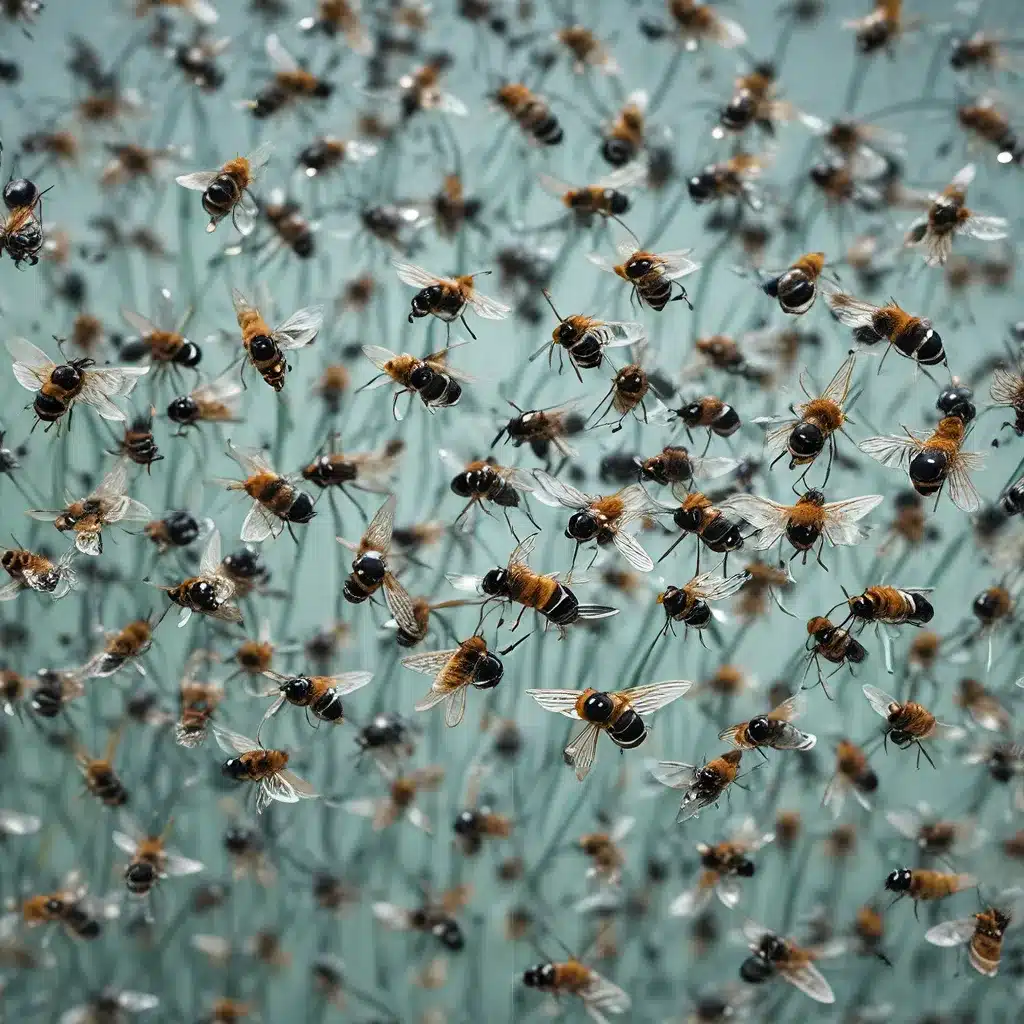
As the world continues to embrace the Internet of Things (IoT) and the proliferation of sensor networks, the need for efficient and adaptive reconfiguration strategies has become increasingly crucial. Sensor networks, which form the backbone of IoT applications, face a myriad of challenges, from energy management and security to reliable data collection and real-time responsiveness. In this article, we will explore the remarkable potential of bioinspired swarm algorithms in addressing these challenges and driving the future of sensor network design.
Bioinspired Swarm Algorithms: A Nature-Inspired Approach
Bioinspired swarm algorithms take their cue from the remarkable collective behavior observed in nature, such as the coordinated movements of flocks of birds, schools of fish, or colonies of ants. These algorithms mimic the decentralized decision-making and self-organizing principles found in natural systems, enabling sensor networks to adapt and reconfigure themselves in response to dynamic environmental conditions or operational requirements.
One of the key advantages of bioinspired swarm algorithms is their inherent scalability and robustness. Unlike traditional centralized control systems, swarm algorithms rely on local interactions and distributed decision-making, allowing sensor networks to seamlessly scale up or down without compromising performance or reliability. This distributed approach also enhances the fault tolerance of the system, as the failure of individual nodes or communication links does not lead to the collapse of the entire network.
Research has shown that bioinspired swarm algorithms can effectively address the challenges of energy management in sensor networks. By leveraging the swarm’s ability to collectively optimize resource allocation, sensor nodes can dynamically adjust their power consumption and duty cycles to extend the overall network lifetime.
Adaptive Sensor Reconfiguration: Responding to Dynamic Environments
One of the most compelling applications of bioinspired swarm algorithms in sensor networks is their ability to adapt and reconfigure the network in response to changing environmental conditions or operational requirements. This adaptive behavior is crucial in IoT applications where sensor networks are deployed in diverse and often unpredictable environments, such as smart cities, industrial automation, or environmental monitoring.
Researchers have demonstrated that by leveraging bioinspired swarm algorithms, sensor nodes can self-organize and reconfigure their network topology, sensing capabilities, and communication parameters to optimize performance. This dynamic reconfiguration allows sensor networks to maintain reliability, responsiveness, and efficiency even in the face of disruptions, such as node failures, environmental changes, or evolving application requirements.
For example, in a smart city scenario, a network of air quality sensors can use bioinspired swarm algorithms to continuously monitor and adapt their sampling rates, sensor placement, and data aggregation strategies in response to changing traffic patterns, weather conditions, or pollution levels. This adaptive behavior ensures that the sensor network provides accurate and timely data to support real-time decision-making and policy implementation.
Securing Sensor Networks with Bioinspired Swarm Algorithms
As sensor networks become increasingly ubiquitous in our daily lives, security has emerged as a critical concern. The distributed nature of sensor networks, coupled with the resource-constrained nature of individual nodes, makes them vulnerable to a wide range of cyber threats, from data tampering and unauthorized access to denial-of-service attacks.
Bioinspired swarm algorithms can play a pivotal role in enhancing the security of sensor networks. By leveraging the swarm’s decentralized decision-making and collective defense mechanisms, sensor nodes can detect and mitigate security threats in a self-organizing and adaptive manner.
Recent studies have shown that swarm-based security protocols can identify and isolate compromised nodes, reroute communication around detected threats, and dynamically adjust access control policies and encryption schemes to maintain the integrity and confidentiality of sensor data.
The Future of Sensor Networks: Embracing Bioinspired Swarm Algorithms
As the Internet of Things continues to expand and sensor networks become increasingly ubiquitous, the need for adaptive and resilient reconfiguration strategies has never been more pressing. Bioinspired swarm algorithms offer a promising and innovative approach to address the challenges faced by sensor networks, from energy management and security to real-time responsiveness and reliable data collection.
By embracing the decentralized and self-organizing principles of nature, sensor networks can adapt to dynamic environments, optimize their performance, and enhance their resilience in the face of disruptions. As the field of sensor networks and IoT continues to evolve, the integration of bioinspired swarm algorithms will undoubtedly play a pivotal role in shaping the future of these transformative technologies.
The sensor-networks.org website, dedicated to the latest advancements in sensor networks and IoT, is a valuable resource for those interested in exploring the potential of bioinspired swarm algorithms and their impact on the sensor network landscape.